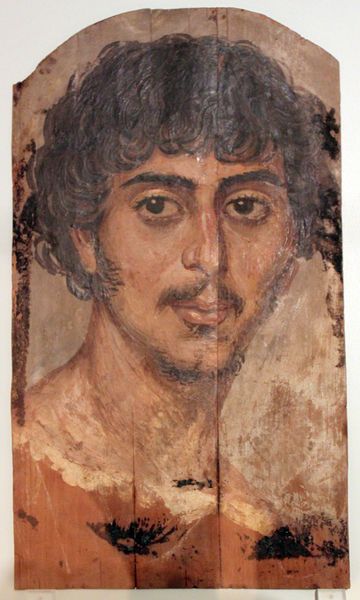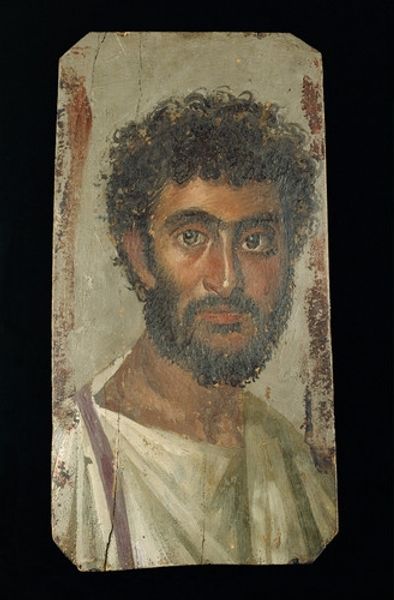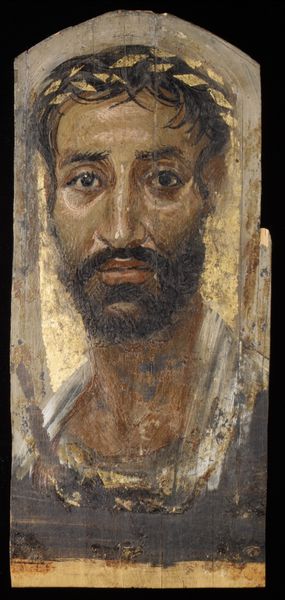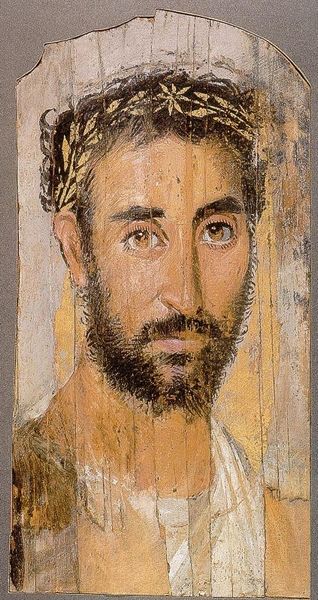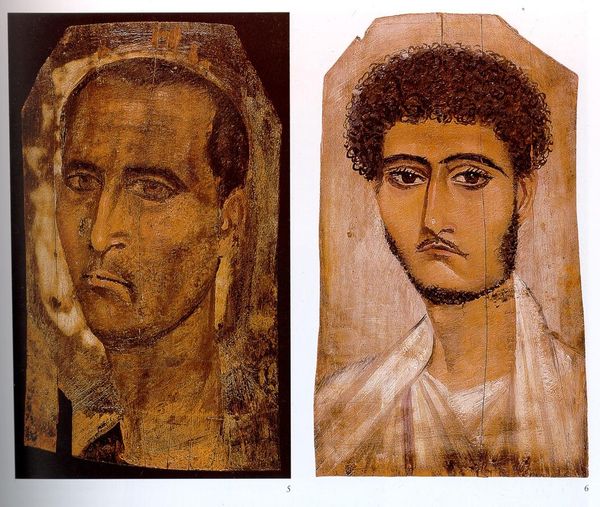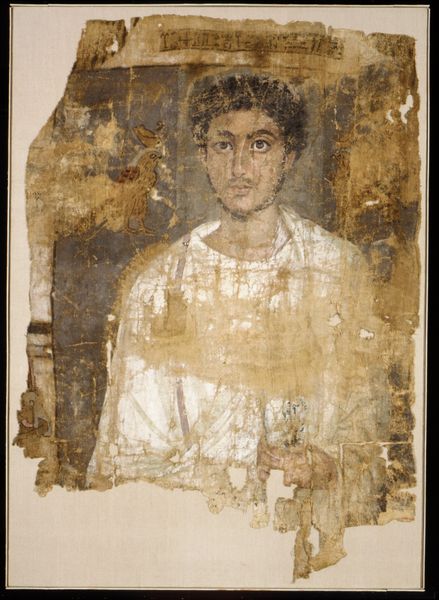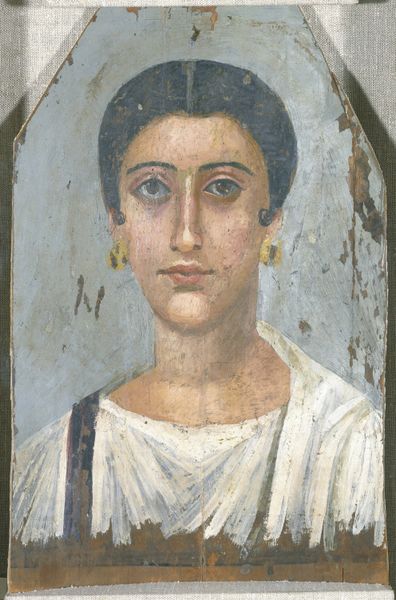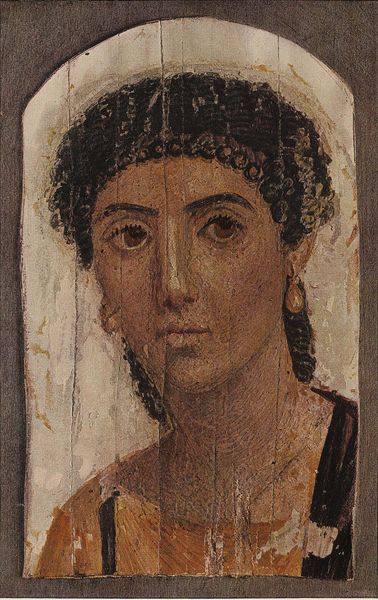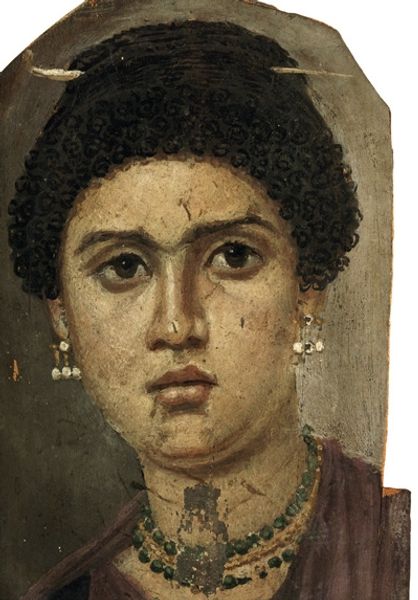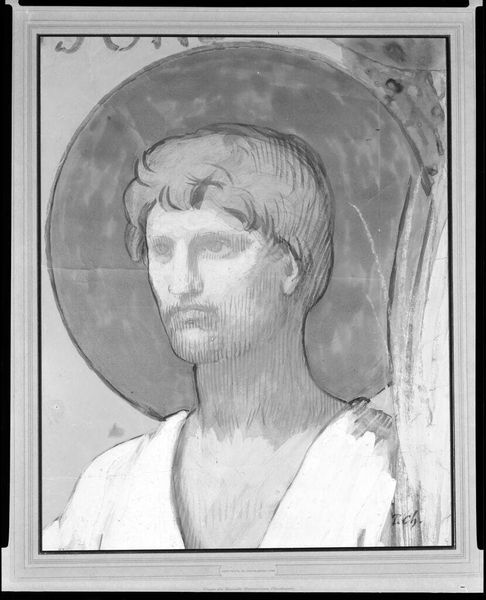
tempera, painting
#
portrait
#
tempera
#
painting
#
ancient-egyptian-art
#
oil painting
#
ancient-mediterranean
#
academic-art
#
realism
Copyright: Public domain
This Fayum Mummy Portrait, made sometime between 50 and 250 AD, is painted in encaustic on a prepared wood panel. Encaustic is an ancient technique that involves mixing pigments with hot wax. Here, the artist likely blended beeswax with natural pigments to achieve a vibrant and lifelike depiction. The molten wax acts as a binder, allowing the colors to fuse together seamlessly, creating a luminous surface. The visible brushstrokes add texture, enhancing the subject’s features. This method was a laborious undertaking. The process of heating the wax, mixing the pigments, and applying them precisely required specialized tools and skill. It was a tradition that blended Greek, Roman, and Egyptian customs, reflecting complex cultural interactions. While honoring the dead, the technique allowed for a naturalism that was new to Egyptian funerary practices. Looking closely, we can appreciate the rich colors and subtle gradations that capture the essence of the individual. By recognizing the labor and traditions involved, we move beyond conventional art categories and discover how they intersect with histories of craft and materiality.
Comments
No comments
Be the first to comment and join the conversation on the ultimate creative platform.
